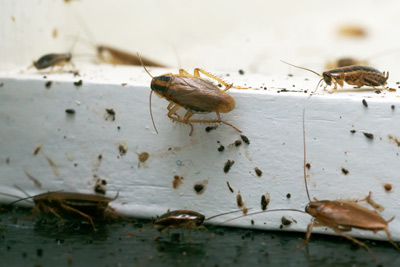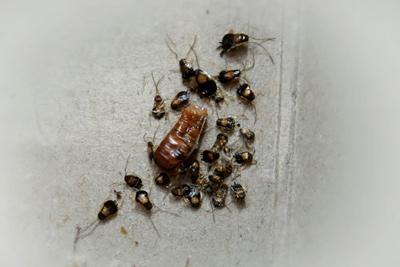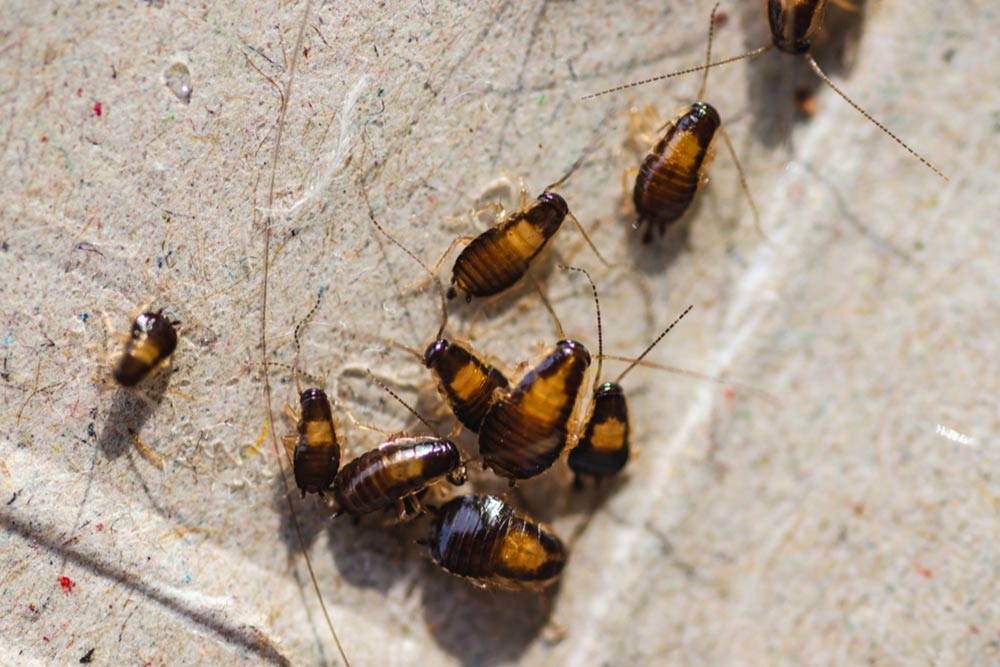Troublesome German Cockroaches
The humble German cockroach may seem insignificant, but its presence can wreak havoc in any home. These tiny creatures are known for their rapid reproduction and agile movement, making them dreaded inhabitants of our living spaces. They are not only unappealing to the eye but also carriers of many diseases, making their infestation a serious health concern.
What Causes German Cockroaches in House?
A variety of factors can cause German cockroaches in houses. Making them the most problematic type among all the pest cockroach species. These pests are attracted to areas with food, water, and shelter, which makes residential and spaces an ideal habitat. Understanding the causes of German cockroach infestations can help homeowners take preventive measures to keep their homes cockroach-free.
One of the leading causes of German cockroaches in houses is poor sanitation. These pests thrive in dirty and cluttered environments, as they can easily find sources of food and shelter. Crumbs, food residue, and spilled liquids can provide a steady supply of nourishment for cockroaches, encouraging them to infest homes. Maintaining a clean and tidy living space is crucial. Regularly sweeping, mopping, and wiping down surfaces to minimize the availability of food and water for cockroaches.
Another common cause of German cockroaches in houses is the introduction of infested items or materials. They can be brought in grocery bags, cardboard boxes, papers, and packaging from shops. Cockroaches can hitch a ride into homes through grocery bags and cardboard boxes. In some cases, German cockroaches can infest your new house when moving. They also can be transferred from your old to your new residence in furniture and electrical appliances and with other personal items.
They can also enter through cracks and crevices in walls, doors, and windows. Inspecting and cleaning any second-hand items before bringing them into the house is vital to prevent the introduction of cockroaches and other pests.
Moisture and humidity are also contributing factors to German cockroach infestations. These pests are attracted to damp areas, such as leaky pipes, dripping faucets, and areas with excessive condensation. Proper ventilation and regular maintenance of plumbing systems can reduce moisture levels and discourage cockroach activity.
They are known to reproduce rapidly, with female German cockroaches capable of producing up to 40 eggs each month. Therefore, even a few cockroaches can quickly cause a full-blown infestation if left unchecked. Often, homeowners are unaware of the presence of these pests until they reach an alarming number. German cockroaches are nocturnal and spend approximately 75% of their lives hiding in dark, secluded areas. That makes it challenging to notice their presence until the infestation has escalated.
German cockroaches are difficult to eradicate because they reproduce quickly and can be easily moved from one place to another in your personal belongings. Early detection and swift action are crucial to prevent them from spreading in houses. Regular inspections, sealing cracks, and using cockroach baits and traps will help control their population.
- IDENTIFICATION
- LIFE CYCLE
- HABITS
The German cockroaches typically measures between 1.1 to 1.6 cm. Their bodies are flat and oval-shaped and light brown colour. Their antennas are long, and legs are shaped like a spine. Although they can’t fly, German cockroaches do have wings. One particular feature that sets apart from other roaches is their lighter colour. The brownish colour is infiltrated with two dark stripes that run from their shield to the lower end of its body.
The juvenile cockroaches don’t have wings and look darker than the adults also have a different body shape what makes them look competently different .
There are three different stages in the life phase of a German cockroach, egg, nymph, and adult. Generally, the entire cycle is completed in around 10 weeks however, this may be influenced by external factors such as temperature and humidity. German cockroaches reproduce quickly and their growth under ideal conditions is fast.
German cockroaches are considered nocturnal, they prefer to hide during the day and become active at night.
They are generally found around kitchens and bathroom moisture is readily available, and prefer warm and humid conditions.
Their favourite foods are, sugars, fats, and starches, however thy will feed on anything. When food and moisture are scarce, German cockroaches will travel relatively long distance in search of these necessities.
How Serious Are German Cockroaches?
German cockroaches are not just a nuisance. Aside from their unpleasant appearance, numerous diseases have been linked to them. Cockroaches are capable of caring bacteria that can cause serious health problems. Salmonella, E coli and asthma in children have all been documented to be transmitted by these pests.







